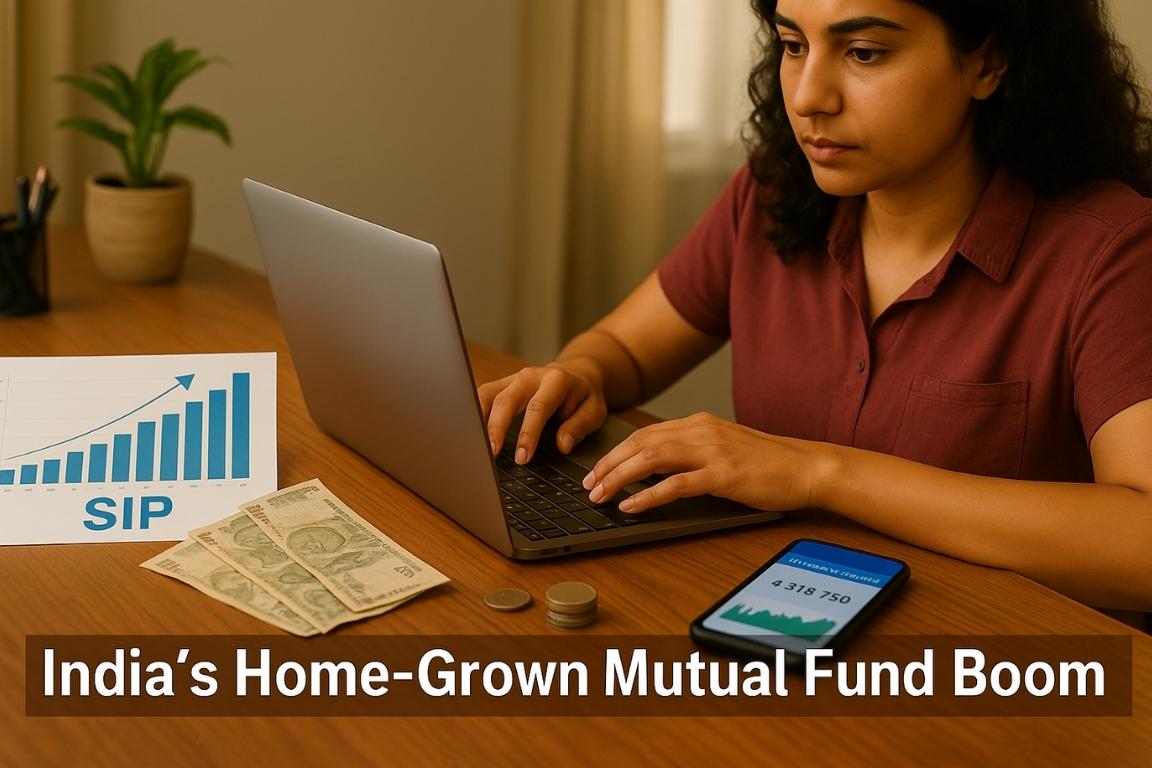Even as Foreign Portfolio Investors (FPIs) continue to withdraw from Indian markets, domestic investors, especially through mutual funds, have helped maintain market stability.
Background
- Foreign Portfolio Investors (FPIs): Invest in stocks/shares of another country (e.g., India).
- Domestic Institutional Investors (DIIs): Indian entities such as mutual funds, insurance firms, and banks investing in the local market.
- Among DIIs, Domestic Mutual Funds (DMFs) have emerged as a major driving force in India’s equity market.

Ownership Patterns
- FPI share in NSE-listed companies (non-promoter holdings) at 17.3% — a 13.5-year low.
- DMF share at a record 10.3%, showing a steady rise in domestic participation.
- Though FPIs still hold a larger share, domestic self-reliance is strengthening.
Growth of SIPs (Systematic Investment Plans)
- SIP accounts grew from 1.41 crore (FY21) to 6.8 crore (FY25).
- SIP Assets Under Management (AUM) rose from ₹4.27 trillion to ₹13.35 trillion.
- SIPs allow small, regular investments (starting from ₹1,000/month), encouraging disciplined investing.
Changing Household Savings Pattern
- Households still prefer bank deposits and insurance, but mutual fund share has grown from 0.9% (2011–12) to 6% (2022–23) of gross financial savings.
Rise in Tier-2 & Tier-3 Cities
- Share of mutual fund AUM from non-metro cities rose from 20% (2015) to 40% (2025).
- Every state saw a 100%+ rise in demat accounts; Bihar and UP recorded 400%+ growth.
Women Investors
- 1 in 4 mutual fund investors is a woman (around 25% since FY16).
- Indicates growing financial participation and literacy among women.
Drivers of Growth
- Increase in demat accounts (from 3.8 crore to 11.8 crore between 2020–24).
- Low fixed deposit rates pushing investors toward market-linked options.
- User-friendly digital platforms and financial inclusion initiatives.
Significance
- Strengthens domestic financial resilience amid global uncertainty.
- Promotes inclusive financial growth through small investments.
- Reduces over-dependence on foreign capital.
MUTUAL FUNDS
- A mutual fund (MF) is a financial product where money from multiple investors is pooled together to invest in stocks, bonds, money market instruments, or a mix of these.
- Managed by professional fund managers who decide where to invest based on the fund’s objectives.
How Mutual Funds Work
- Pooling of Funds: Many investors contribute small or large amounts into the fund.
- Professional Management: Fund managers invest the pooled money in a diversified portfolio according to the fund’s goal (growth, income, or balanced).
- Returns: Investors earn returns in two ways:
- Capital gains: When the value of invested assets rises.
- Dividends/Interest: From stocks, bonds, or other securities in the fund.
- Liquidity: Investors can buy or redeem units of the mutual fund anytime (except for certain closed-end schemes).
Types of Mutual Funds
- Equity Funds: Invest mainly in stocks; high risk, high return.
- Debt Funds: Invest in government or corporate bonds; lower risk, moderate returns.
- Hybrid Funds: Mix of equity and debt; balanced risk.
- Liquid Funds: Invest in short-term instruments; very low risk, good for parking cash temporarily.
Safety of Mutual Funds
- Not guaranteed: Returns are market-linked, so the value can go up or down.
- Risk depends on type:
- Equity funds → high risk
- Debt & liquid funds → lower risk
- Regulated: All mutual funds in India are regulated by the SEBI (Securities and Exchange Board of India).
- Diversification helps: Risk is reduced because the fund spreads investments across many securities.
Conclusion
India’s investment landscape is transforming — with SIPs, women investors, and non-metro participation driving a home-grown mutual fund revolution. This shift signals greater financial maturity, self-reliance, and wider market access for ordinary citizens.





